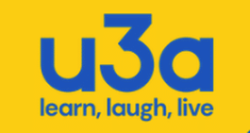U3A Joining Session
U3A Joining Session
4th October 10.30-12.00 St Peter’s Methodist Church Hall, Canterbury CT1 2BE.
U3A is a learning organisation run by members, for members. With courses, talks, outings and holidays. Opportunities to share your knowledge and expertise with others. Subscription: £20 annually (plus £1.00 fee per course session). To find out more, or become a member, visit our website: https://u3asites.org.uk/canterbury




